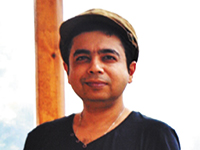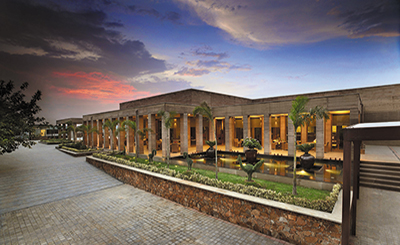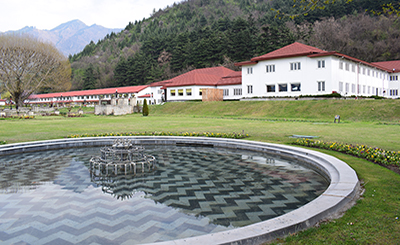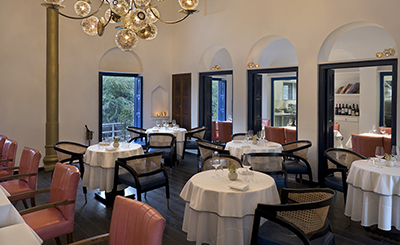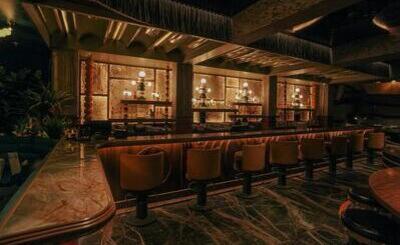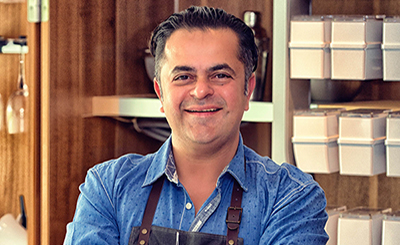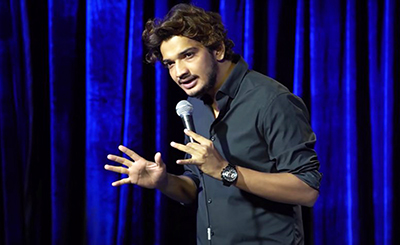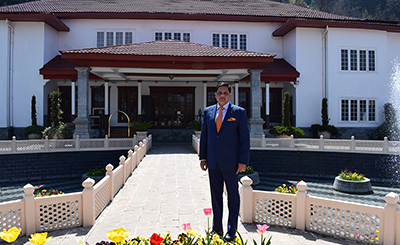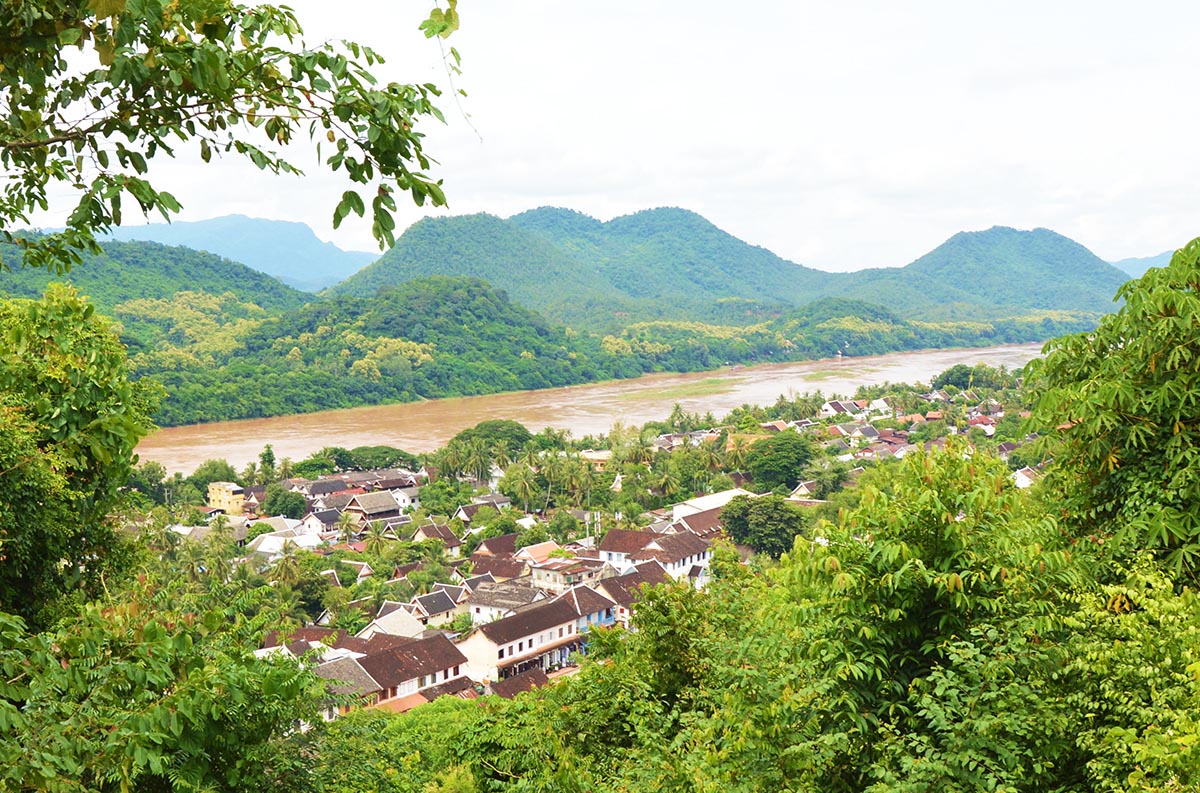
Luang Prabang from Phousi mountain. Photos: Devdan Chaudhuri
Luang Prabang is best ventured on one’s own. It’s the perfect destination for self-discovery, for clearing the clutter within the mind and for regaining the deeper touch with the soul.
‘The journey itself is home’ ― Matsuo Bashô
I
On the Road to Siem Reap
It was Cambodia of 2005. The road trip from Bangkok to Siem Reap — via Aranyaprathet-Poipet border crossing — used to take 16-18 hours. The condition of the unpaved road in Cambodia rattled the passengers so severely that the bus could only crawl at 20 km an hour. The journey was excruciatingly slow: it was a perfect occasion to test one’s progress in meditation, and hone up one’s skills, in the cultivation of patience.
Only the tempers of a Frenchman who was travelling with his wife, and two young children, flared up occasionally. The rest of the passengers were young backpackers from across the globe. They were less grumpy, and started to make fun of the ordeal in order to survive it.
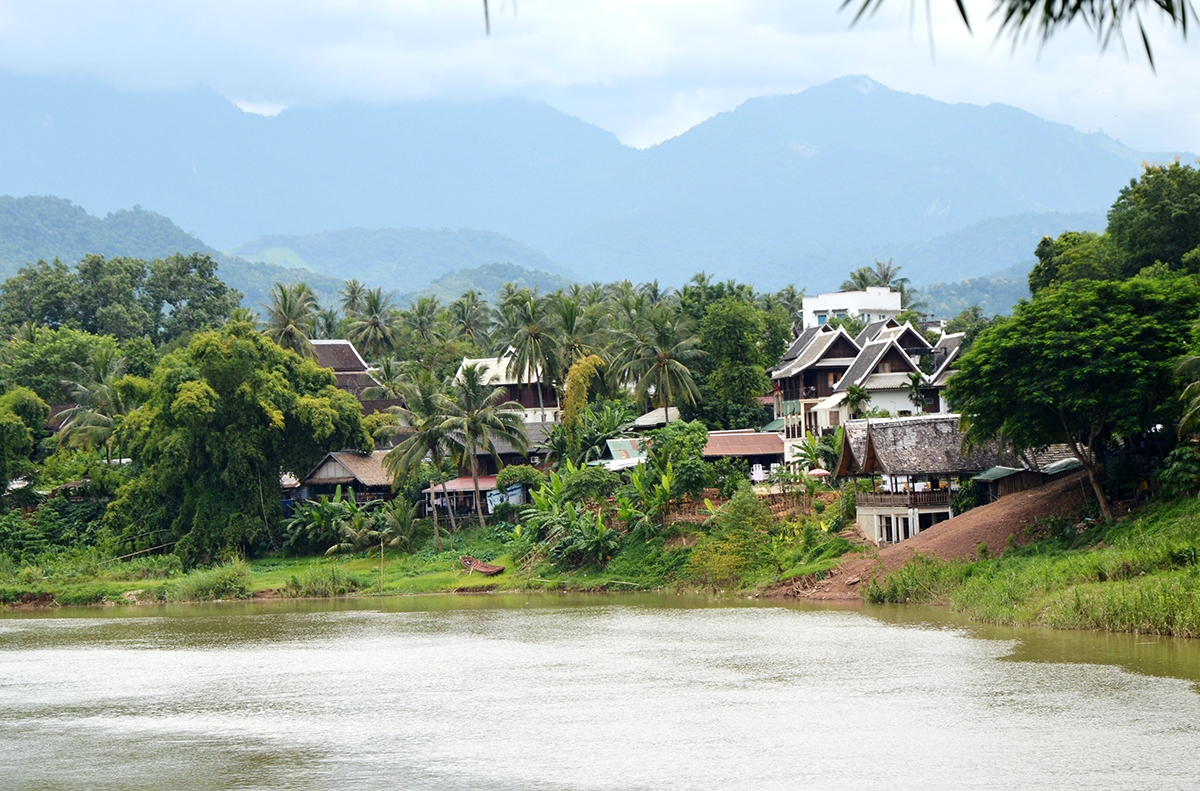
Houses by the Nam Khan
The most welcoming part of the bus journey, at the Cambodian side, was the stops. There is something soulful and charming about the basic roadside places which cater to passing travellers. Around midnight, in a dark forested area, in the middle of nowhere — few hours away from Siem Reap — we stopped at a low-lit dive that was serving chilled Angkor beer and freshly cooked food. The calming atmosphere and friendly service made us less anxious to get to Siem Reap, and lured us, to linger a bit longer.
One of the joys of independent travel is the travellers you meet on the road and the stories they tell you. Backpackers, when they meet each other, on the Rough Guides or Lonely Planet trails, open up to each other like long lost friends: no small talk happens; the conversations tend to be frank and sincere. More faraway and remote the place of meeting — at a small wooden jetty in Borneo’s Bako National Park or at a highway stopover near Egypt’s White Desert — more welcoming and friendly becomes the random encounter. The sense of belonging to the ‘fraternity of backpackers’ is like the sense of belonging to some secret society by taking an oath of blood.
It was there in Cambodia, on the way to Siem Reap, at a table cluttered with bowls of noodles, beer bottles and ashtrays — shared by six backpackers from five continents — when I first heard about Luang Prabang. The Omani guy raised the topic of ‘out of the world Laos’. A couple of others joined in to support his statement. Stories began to be told. ‘Not many people know, and it’s better that way,’ the Israeli girl remarked, ‘Luang Prabang is the secret jewel of Asia’.
*
One year later, in the month of August in 2006, I crossed the northern Thai-Laos border between Nong Khai and Vientiane — the capital of Laos — and made my way to Luang Prabang, via the picturesque town of Vang Vieng on Nam Song river. The town is a backpackers’ haven; it nestles within green limestone hills of striking shapes which tower over the town like auspicious deities.
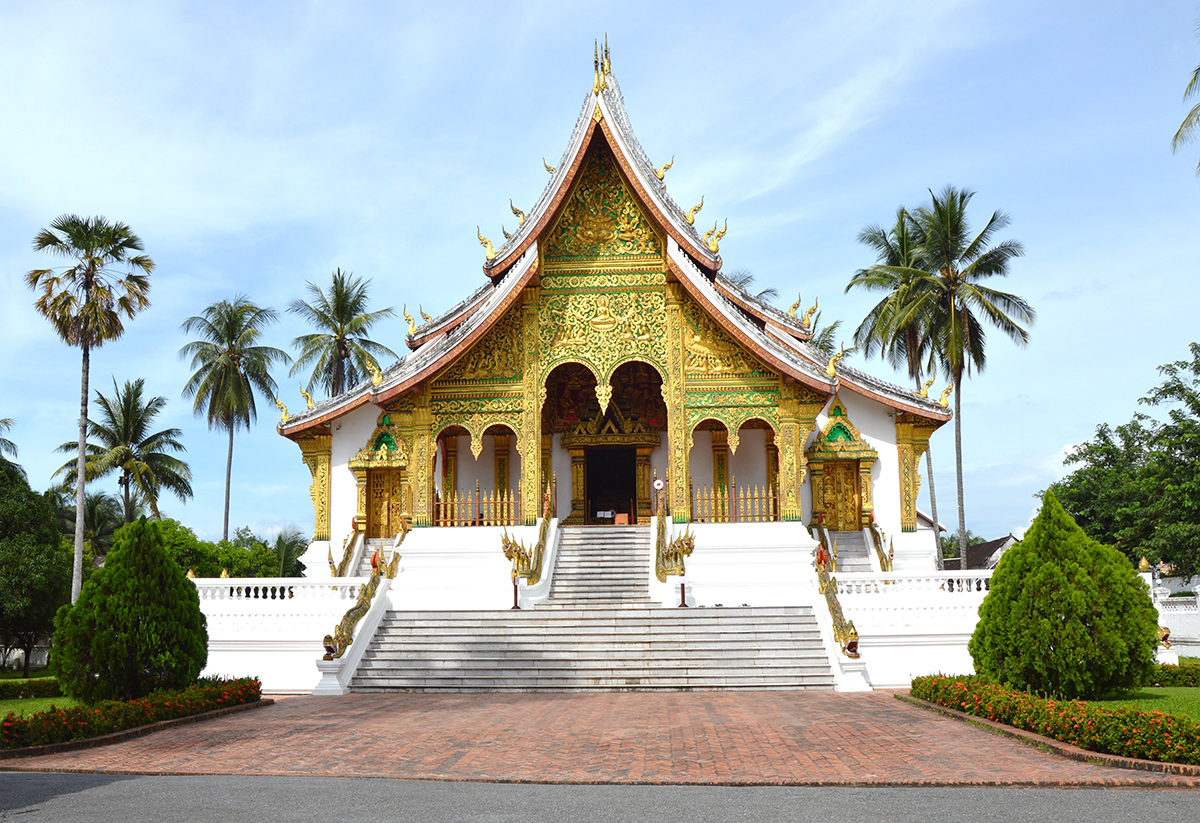
One of the gilded wats
Luang Prabang won my heart in 2006. I kept thinking about it for many years, and finally went back in 2017, in the month of September.
Before I write about the ‘Secret Jewel of Asia’, something needs to be said. I travelled to Cambodia for the second time in 2012. Even though I flew in to the country that time, I knew that the road has been fixed. The journey between Bangkok and Siem Reap now only takes 6 hours, excluding an hour or two that one needs at the border. But back then in 2005, it was a different world, even though, it wasn’t that long ago.
II
The Secret Jewel of Asia
No matter what is happening in one’s life, it is difficult to be sad when one is watching a sunrise at dawn. Luang Prabang feels like an eternal sunrise.
Within a green valley, at the confluence of the great Mekong River and the Nam Khan (Khan River), with Mount Phousi at the centre, Luang Prabang’s irresistible charm is a blend of the rural and the urban, the French and the Indochinese and the Socialist and the Buddhist, along with world class comfort, delicious cuisine, pulse-dropping calmness, natural nourishment and spiritual peace.
The city slows you down to the depth of your soul; the quarks in your bone feel rested.
The word jewel is true match for Luang Prabang: literally meaning ‘Royal Buddha Image’. Even the effusive introductory description on the Lonely Planet website calls the UNESCO protected city — that is entirely a World Heritage Site — a gem, meaning something rare, beautiful and precious.
*
When one returns to a place after several years, one naturally tends to contrast between then and now. In September 2017, things had changed. There was no longer a single private airlines company — with exorbitant rates — flying to Luang Prabang from Bangkok. The airport has been enlarged, and now Luang Prabang is connected with many direct flights from several hubs of Asia. This has changed the demographics of the travellers. Western travellers no longer dominate the scene; it is now, the time of the Asians.
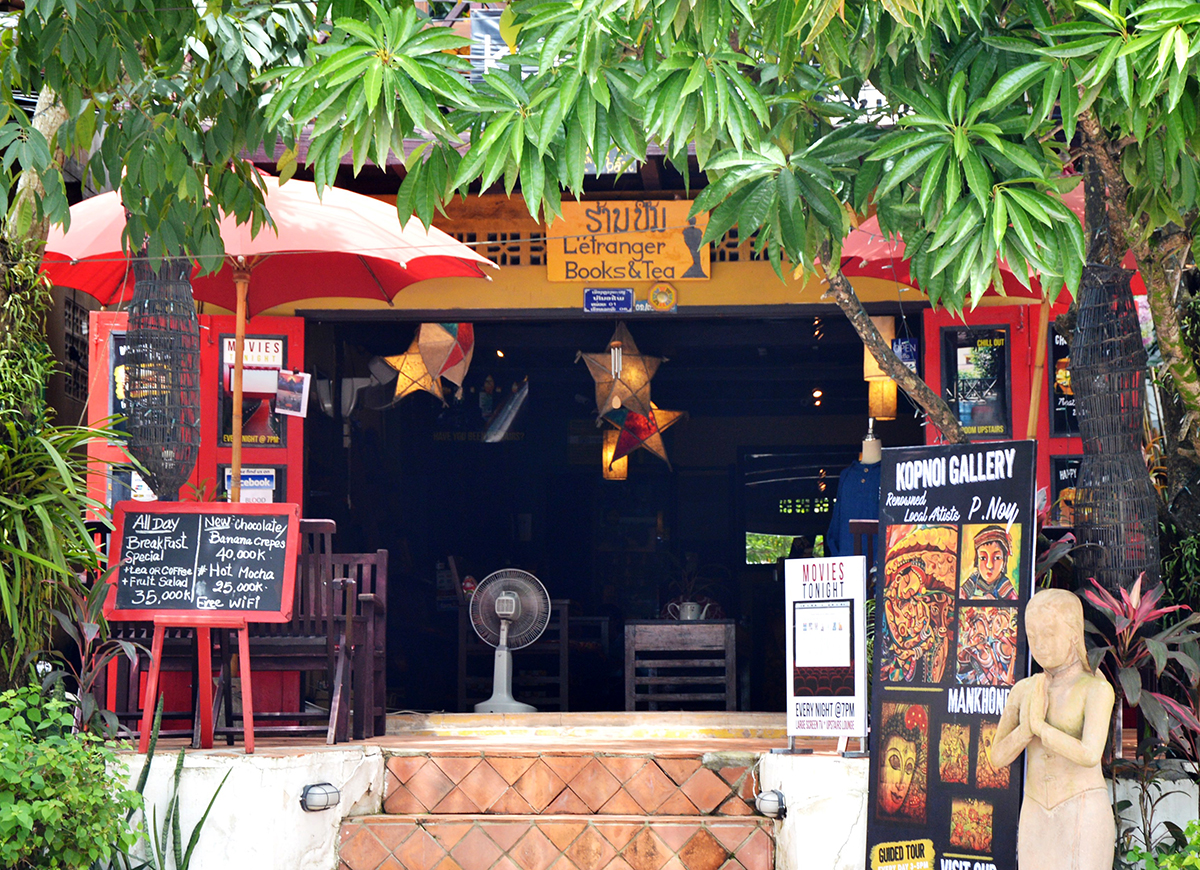
L'Etranger Books & Tea
Backpackers and independent travellers abhor being described as tourists — that word is best suited for those who travel in commercial ‘package deals’, and display a different set of characteristics, than the more brave and more adventurous, who love travelling on their own, and finds it addictive, revelatory, transformative and therapeutic.
In Luang Prabang nowadays, the Asian independent travellers and backpackers outnumber their Western counterparts, while a growing slice of ‘commercial package’ tourists — from China and Europe — have begun to infiltrate the city, much to the chagrin of some of the locals — whom I spoke to — who are less excited about the large groups of tourists moving as cantankerous herds around the city and disturbing the serene sanctity of the 33 gilded temples where saffron-clad Buddhist monks also study and live.
All Lao boys — between the ages of eight and twenty — are expected to become novice monks for at least three months of their lives, and some do it for several years (up to twelve years), before returning to normal lives.
*
Beginning with the Kingdom of Lan Xang (1354-1707), Laos was under French Indochina (1893-1949). The country won independence from France in 1953 and the Lao Civil War (1953-1975) abolished the monarchy in 1975. The current constitution was framed in 1991 and Laos joined the ASEAN in 1997. Presently it is part of the China’s Belt and Road Initiative — also called the ‘New Silk Routes’. The Chinese investments and development projects are changing the face of the socialist Buddhist country with a population of 7 million.

Buddha at wat
Laos is the only landlocked country in Southeast Asia and is bordered by five nations. Between 1964 and 1973, the US dropped more than two million tons of bombs, even though Laos wasn’t at war with the US. They did it anyway, to block Vietnam’s supply lines and destroy the ‘Ho Chi Minh Trail’ which ran through the Lao province of Attapeu, near the Vietnam border. The cluster bombing campaign — where big bombs eject smaller bomblets to devastate a wider region — was dubbed the ‘Secret War’, as it was done without the authorisation of Congress and the knowledge of the American public.
Horrors of history are often laced with absurd irony. The ‘Secret War’ comprising 580,000 bombing missions in 9 years has made Laos the most heavily bombed country per capita in human history. This happened without Laos being at war with the US.
Death-by-barbarism didn’t end in 1973. One third of the dropped cluster bombs — estimated to be about 80 million — haven’t exploded. Many of the unexploded bombs have maimed and killed over 20,000 people, since the clandestine war got over. In spite of the intensification of the clearance efforts, the unexploded bombs still do damage and bring death to over 50 people a year in Laos. Only 20 million unexploded bombs have been cleared in the last 45 years; the clearance of the rest of the Vietnam War era US bombs — as per a recent South China Morning Post article — is estimated to require 200 years.
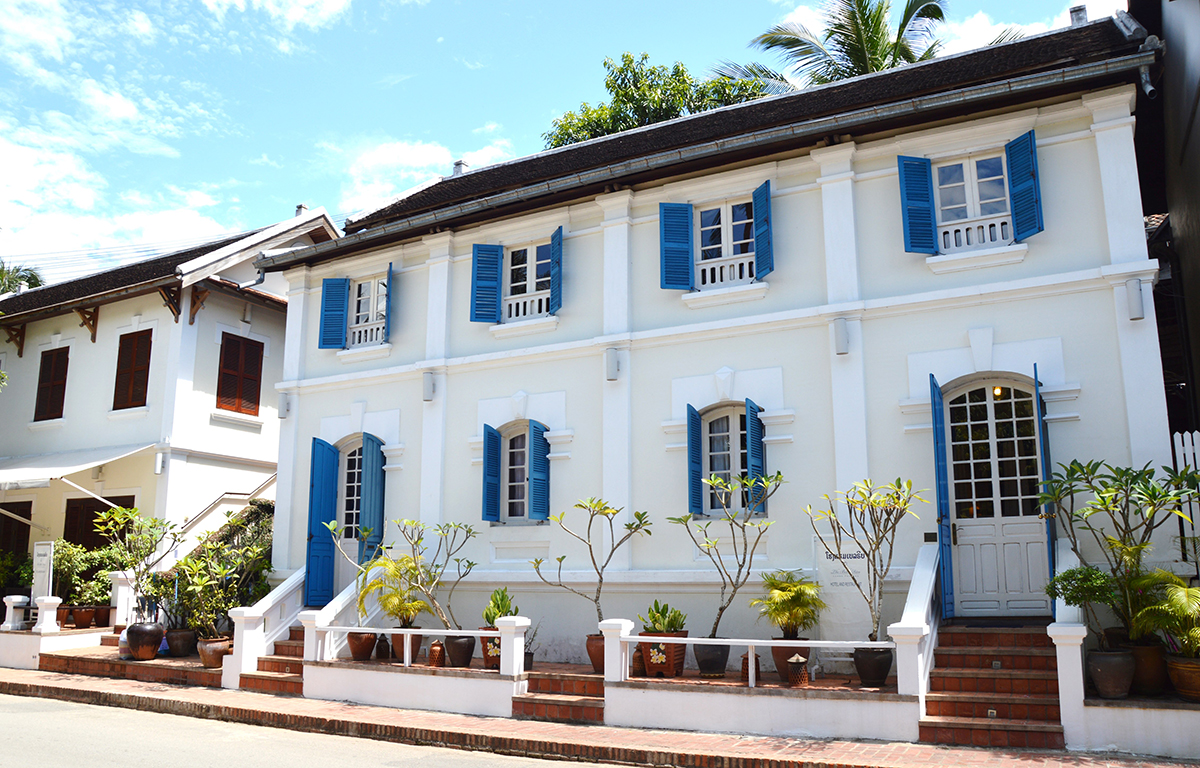
Colonial Architecture
The unexploded ordinance is known as UXO. Key-chains of UXO replicas sell as souvenirs, and some restaurants — like the must-visit Utopia (www.utopialuangprabang.com) — display some of the diffused bombs prominently by using them as decorative objects and art installations, as a stark reminder to the deadly legacy and the history of imperialism.
*
During my first visit to Luang Prabang I had arrived at the city, walked around with my backpack and found myself a wooden cottage-like room with a fan and an attached bath, and a big-hearted window facing a garden with banana trees, hens and a loud-throated cock. It was the Levady Guesthouse run by a local family who stayed in the adjoining building.
In 2017, I booked a room in advance using the Internet, even though I wasn’t travelling during the high season, which is between November to February. It was an air-con room with an attached bath and a cosy river-view balcony with cushioned chairs, facing the gentle waters of the Nam Khan. Like before, it was a guesthouse run by a local family, who stayed in an adjoining building. The name of the guesthouse was Phasith, and it was located near a hot-spot of bars and restaurants (including Utopia) and my favourite bookshop in Luang Prabang: L’Etranger Books & Tea, named after Albert Camus’ The Outsider.
Ideally, one week should be the minimum period of stay in Luang Prabang to soak and harmonise oneself with its spirit that tends to heal, rejuvenate and work its spell, when one gives it a generous dose of unhurried time.
Having no plans is often the best travel plan one can have. Instead of falling into a strict predetermined schedule, I have come to realise that it’s wiser to allow randomness, instincts and the flow of time to determine the course of the day. One should ideally be open to make changes to follow the opportunity of certain experiences which suddenly arise and keep time for ‘aimless wanderings’ where the unexpected often happens. So it’s always better to factor in randomness within the travel plan and keep a couple of ‘nothing to do’ days within the itinerary.
The population of Luang Prabang has increased along with the influx of travellers and tourists, but it has retained its sleepy sense of contagious slowness along with all its natural beauty, architecture and charm. For a traveller, who likes to walk around, and explore the lanes and the by-lanes, there are many possibilities of enthralling discoveries around the corner, such as encountering the atmospheric Icon Klub — a literary bar, with an array of cocktails, run by a Hungarian poet.
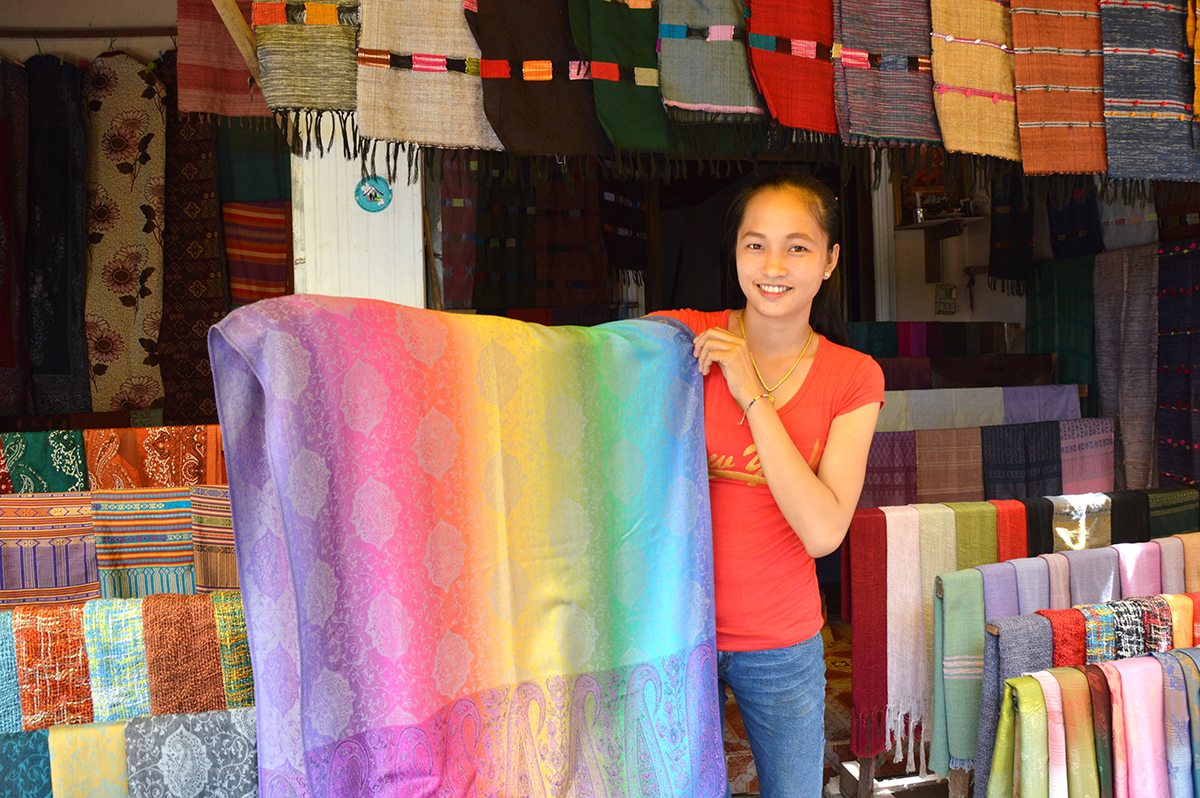
A girl selling Lao silk
There are many things to do in Luang Prabang — visiting the emerald waters of Kuang Si waterfalls, sailing the great Mekong to visit the Buddhist Pak Ou caves, hiking to a tribal village in the mist covered mountains, striking a conversation with a monk in the impressive Wat Xieng Thong and Wat Mai, taking a tour of the Royal Palace, climbing the Phousi hill to watch the expansive views of the landscape, shopping in the daily handicraft night market, sampling the roadside eateries selling baguette sandwiches and fresh fruit juices and eating out in many world class cafes and restaurants such as the Utopia, Joma Bakery, Le Banneton, Tamarind, L’Elephant and others.
(Only cautionary advice, avoid the holiday season of the Chinese New Year — an annual invasion during February takes place from China and the room rates can quadruple. For the rest of the year — if one is not in the mood to splurge on the top-end boutique hotels — $55 (1 person) and $75 (2 persons) is a comfortable daily mid-range budget including accommodation, food, drinks and the day tours. Visa-on-arrival for a stay up to 30 days is available to Indian passport holders. For more detailed information, one can visit the websites of Lonely Planet, Rough Guides and Tales of Asia).
*
During my travels, I usually don’t encounter many independent travellers or backpackers from India. The larger majority of Indians still prefer to travel via the commercial packaged tours, and fortunately — and I say this with relief — no tour company in India offers packages to Laos, as of yet.
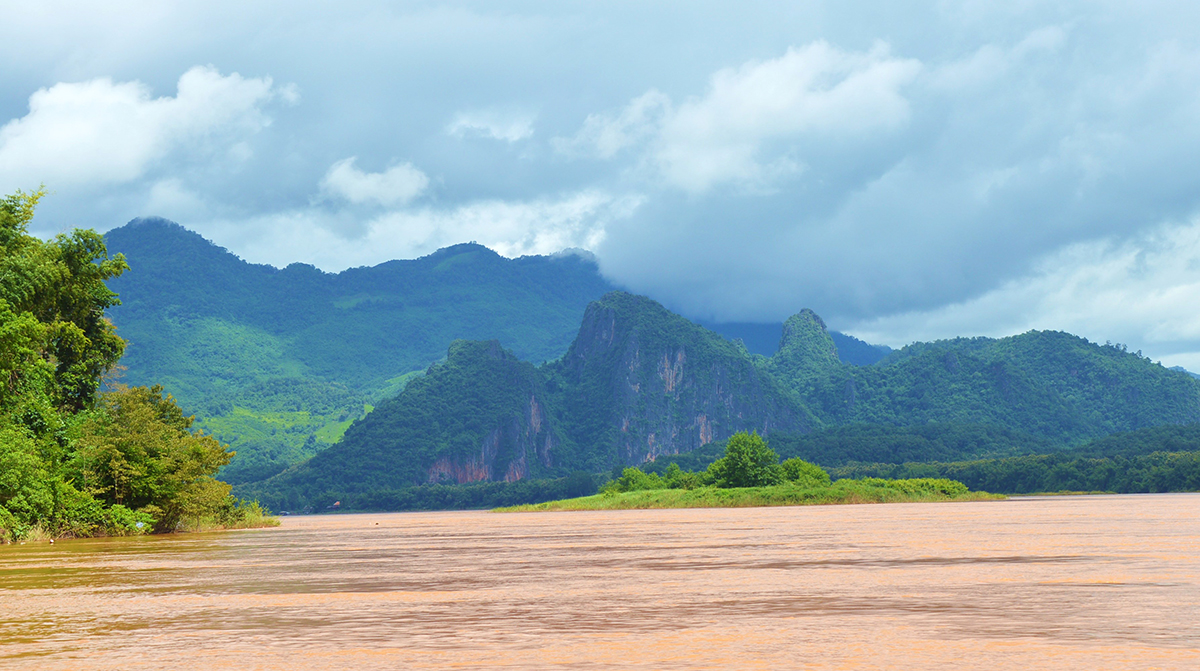
Mekong River
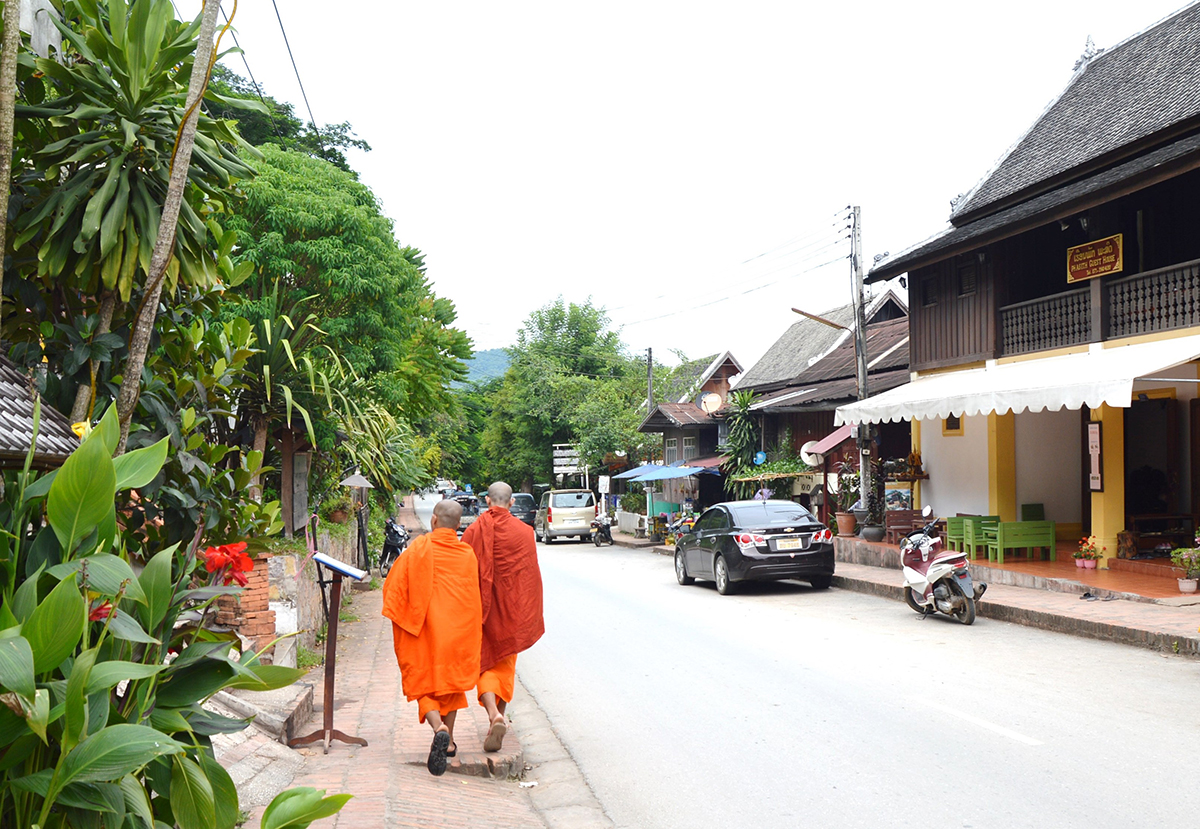
Street life
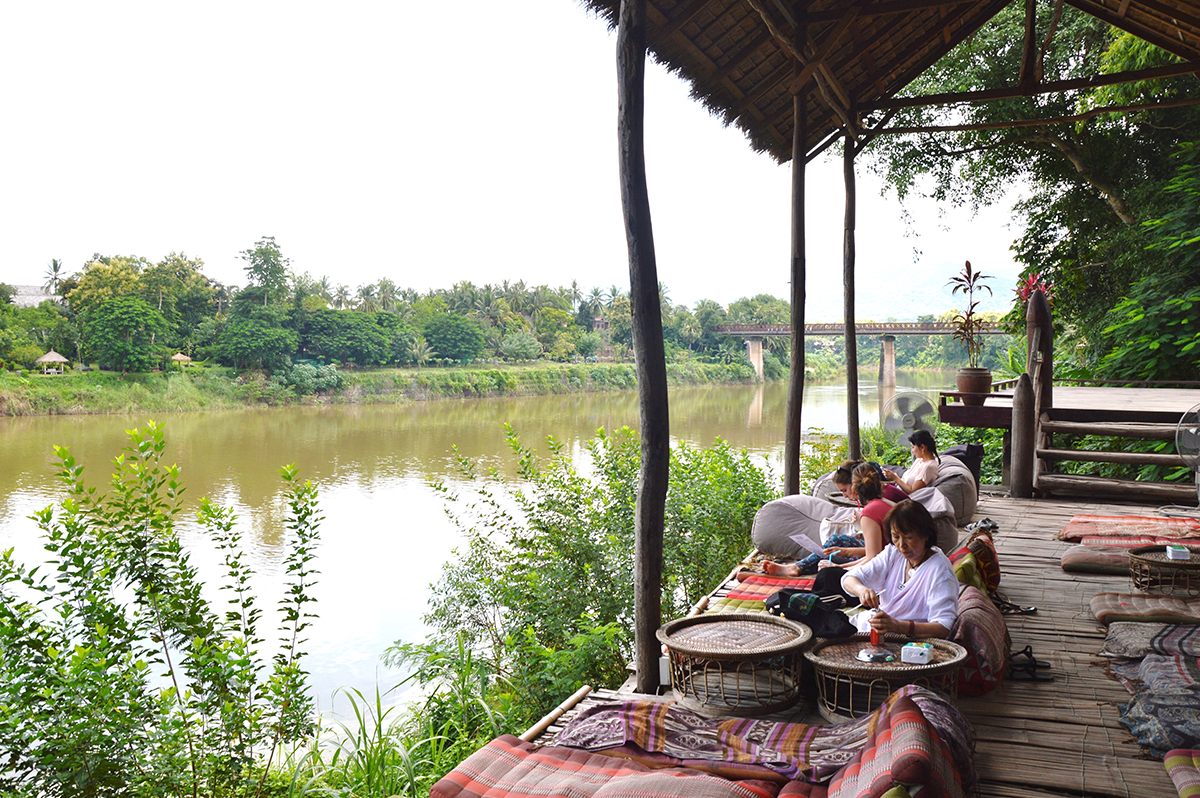
Utopia by Nam Khan river
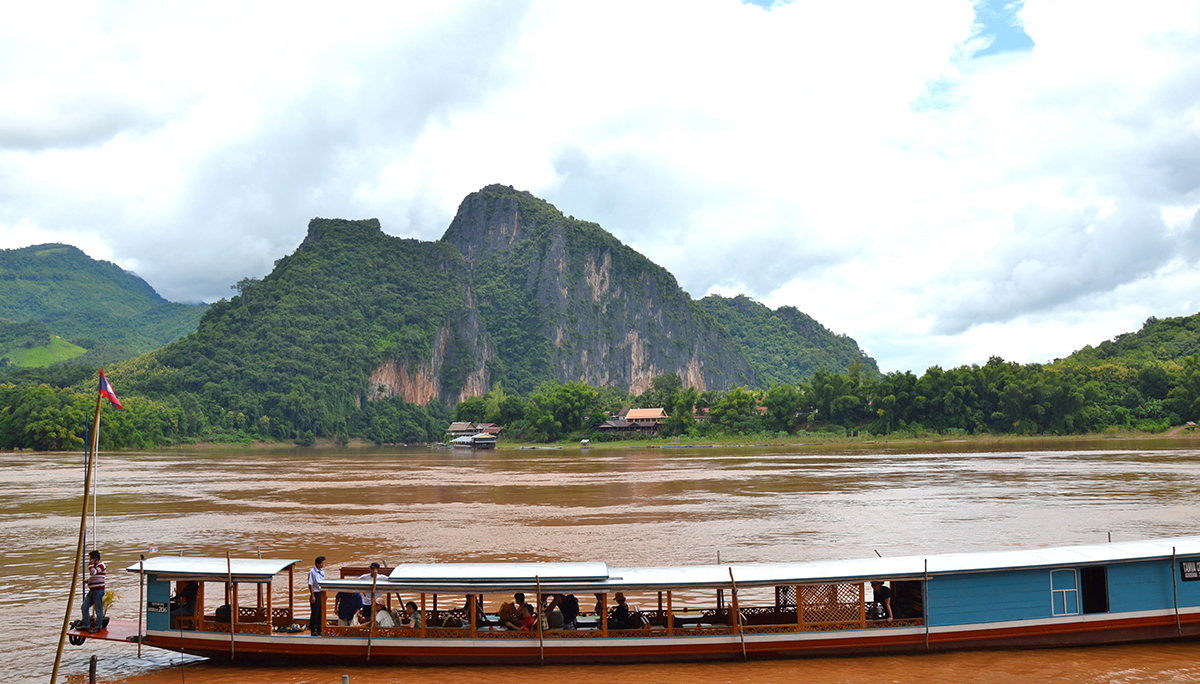
The long boat
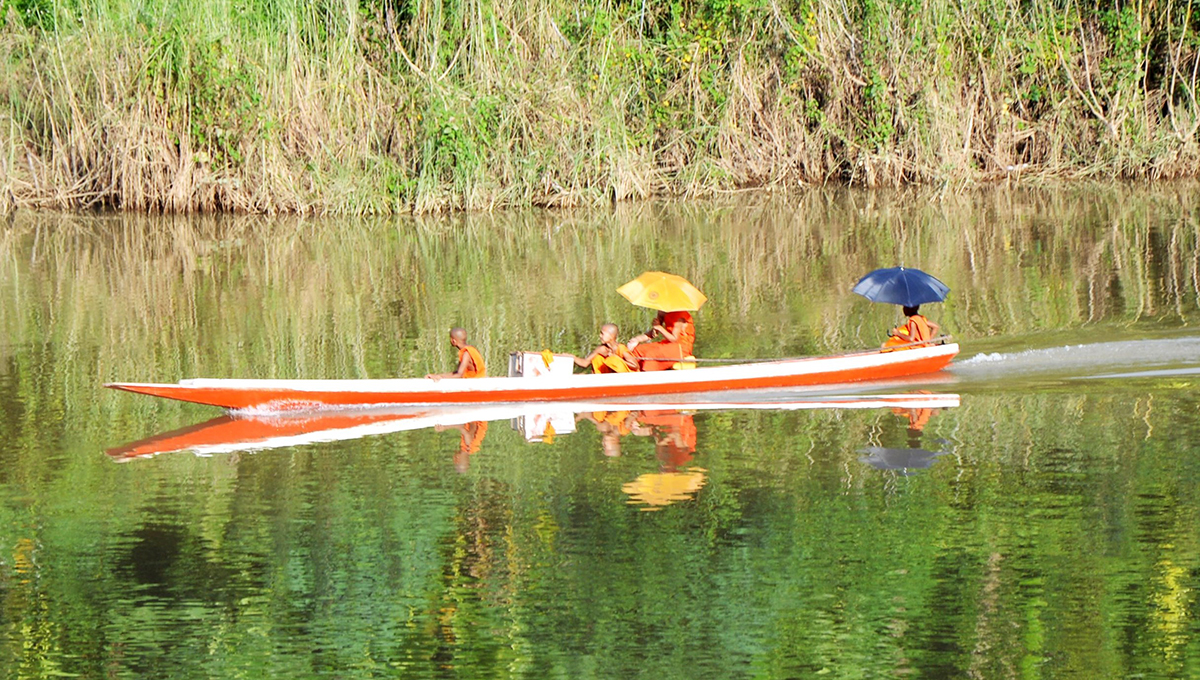
Monks sailing on the river
Luang Prabang is best ventured on one’s own. It’s the perfect destination for self-discovery, for clearing the clutter within the mind and for regaining the deeper touch with the soul.
Over the years, the word of the ‘Secret Jewel of Asia’ has already got around in the wider world, beyond the stories, exchanged in faraway places by seasoned travellers for whom journeys feel like home.
I hope the word will spread here as well, and the adventurous Indians will venture independently into Laos, take the road less travelled, experience Luang Prabang, and feel, know and understand, what wondrous things a place can do to a human soul.
More from Culture
Comments
*Comments will be moderated



